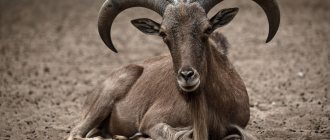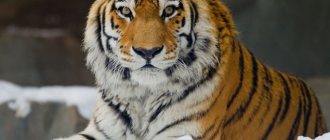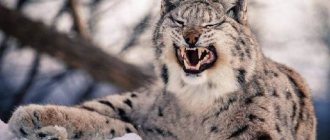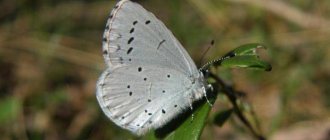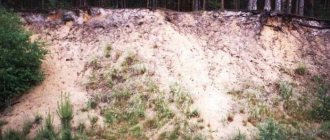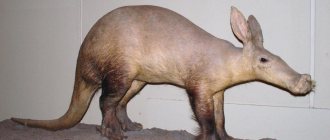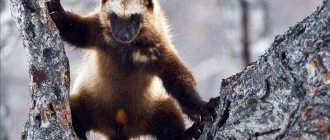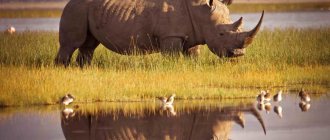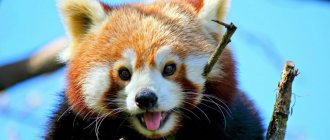The date of the first release of the Regional Red Data Book in the Southern Urals was 2005. The list of rare species then included 368 animals, birds, insects and plants. These are those representatives of flora and fauna that have now almost disappeared from the region. Some of them, which were once common in the region, are now impossible to find.
Getting into the Red Book of the region, as well as into the All-Russian publication with the same name, means receiving protected status. For example, it is prohibited to hunt animals listed in the Red Book, and plants from this list are prohibited from being plucked or destroyed in any other way.
Reptiles
Swamp turtle
Spindle is brittle
Common copperhead
Patterned runner
Eastern steppe viper
Mammals
The Sverdlovsk region became the habitat of 66 species of mammals, of which:
- rodents – 23 species;
- predators – 17;
- insectivores – 11;
- bats – 9;
- artiodactyls – 4;
- lagomorphs – 2;
Among the mammals listed in the Red Book, the class of bats is of great concern to environmental organizations. Small, squirrel-like animals, charming flying squirrels are accustomed to living in large colonies.
flying squirrel
This caused a sharp decline in numbers. Destruction of habitats immediately leads to the loss of a large number of individuals.
Large European reindeer are disappearing along with changing climate conditions. Warming causes snow cover to melt. The snow compacts and becomes crusty, which prevents animals from getting food and using snow to quench their thirst.
Hunger drives deer from their usual places and reduces the population size. Listed in the Red Book as a species on the verge of extinction.
Reindeer
River otters, included in the section of rare animals, live on the banks of rivers littered with windbreaks.
Reference . Damage caused to animals and plants from the Red Book of the Sverdlovsk Region provides for liability before the law.
Brown long-eared bat
Water bat
European mink
Nathusius' Bat
Brandt's bat
Pond bat
river otter
Northern leather jacket
Whiskered bat
Conclusion
The Red Book is a “living” publication. This is not a work of art that is written once and for all. The list of protected animals reflects the real state of affairs, which means it should be updated. In 2022, the Ministry of Ecology of the Urals and the Chelyabinsk Region, in particular, presented an updated edition of the regional Red Book. Experts decided to add 74 representatives of the animal and plant world to the list of rare species. At the same time, 27 positions occupied by insects, birds, mushrooms and even lichens were “crossed out” from it. The number of some of them increased to normal values, while others finally ceased to be found in the region.
The Chelyabinsk region occupies a fairly large area, and there are several natural zones: steppe and forest-steppe, mountains, as well as vast forests stretching for tens of kilometers. This implies extensive flora and fauna. Among seemingly similar insects, such as bumblebees, there is a division into species and subspecies. As a result, the Book's list includes the bumblebee, although such insects are found abundantly throughout the region. And only experts know that we are talking about the steppe bumblebee, the population of which is really on the verge of extinction, and throughout Russia.
Animals of the Northern Urals
The territory of the Northern Urals covers dense taiga forests, swamps and tall grass subalpine meadows. Animals of the Northern Urals are species characteristic of both European and Siberian forests. In general, typical representatives of Arctic species live in high mountain areas.
In the taiga of the Northern Urals there are brown bears, brown hares, foxes, moose, reindeer, lynxes, wolverines, ermines, beavers, black grouse, wood grouse, hazel grouse, ducks, partridges. Also, martens, sables, weasels, crosses between martens and sables - kidus, otters - have adapted to the difficult conditions of the North Ural. Otter and badger are rare animals of the Urals .
In the taiga forests of the Middle Urals you can hear crossbill and nutcracker. Tits here are, perhaps, one of the main representatives of this area. On the treetops you can see proud, handsome bullfinches and the chief orderlies of taiga forests, woodpeckers.
Animals in this area are also represented by a variety of small rodents. Here you can find mouse mice, forest voles, and baby mice. The smallest mammals in the world, shrews, live in the shade of tree trunks.
Wolverine
This representative of the order of predatory animals received the popular name “glutton”, “skunk bear”, “demon of the north”. Wolverines are the most ferocious and powerful hunters of the mustelid family. Outwardly, these animals look like small bears with fluffy tails. Wolverines do not exceed 1 meter in length and weigh no more than 15 kg.
Despite their modest size, these predatory animals are capable of killing a wolf or driving an adult lynx up a tree with just one bite. Wolverine is able to catch up with a reindeer or elk, jump on the back of this animal and persistently bite into the scruff of the neck until the huge carcass of the artiodactyl collapses to the ground.
The wolverine's menu also includes squirrels, hares, and foxes. These predators can boast of bloodthirstiness only in winter. In the summer, wolverines behave more modestly in their choice of food: they devour carrion, bird eggs, insect larvae, and sometimes, along with brown bears, they feast on nuts, berries and fruits.
Middendorff's vole
This small mammal from the order of rodents can be found in moss swamps in the North Ural tundra. The length of its body is 13 cm, the length of its tail is 3.5 cm. In summer, Middendorf's voles eat the stems and leaves of sedge, and in winter, the root parts.
For the winter they prepare rhizomes. Voles, as a rule, build nests in blueberry bushes and in the wilds of carp birch at low altitudes.
Elk
Currently, the Urals are unthinkable without a giant from the deer family - the elk. These huge, long-legged, artiodactyl animals are not often found in the taiga forests of the North Ural. The body length of an adult male is at least 3 meters, and the height at the withers is up to 2.7 meters. These giants weigh from 2.5 to 5.8 centners.
Male moose are easily recognized by the huge branched antlers that females lack. As in ancient times, they are currently trying to domesticate moose. In Russia there are even special moose farms where these cloven-hoofed giants are bred. And, I must admit, not without success.
These animals look somewhat awkward: their stilt legs visually seem too thin compared to their massive body. The short tail is completely invisible. Moose ears are huge, but their eyes are small. The nose is humpbacked and drooping, on the neck there is a soft leathery outgrowth - an “earring”. Despite this appearance, the elk is the largest representative of the deer family and the undisputed master of forests and swamps.
Mushrooms
The Sverdlovsk region has become home to 30 species of rare mushrooms.
Interesting fact . In 2022, employees of the Visimsky Nature Reserve discovered a rare species of tinder fungus. Experts from the Yekaterinburg Institute of Ecology confirmed the exclusivity of the find.
Polypores are found in only a few places around the country. The mushroom is amazing in size. The diameter of the cap reaches 55 cm.
Umbrella tinder fungus
Unusual lattices resemble openwork works.
Ramarias growing in coniferous forests differ in color, which is reflected in the name - yellowing, reddish ramarias.
Oak sponges grow up to 15 cm in diameter. A small fungus settles on trees, infecting them with white rot.
All types of mushrooms are included in the Red Book of the entire Middle Urals.
Oak sponge
Unusual grate
Osteina covered
Gossamer violet
Ramaria reddish
Sparassis curly
Russula golden
Varnished tinder fungus
Phallus immodest
Wolf and fox
The wolf and the fox are fairly well-known predators of the forest. Foxes love to live in sparse forests, along rivers, and near human settlements. This red-haired predatory beauty prefers to eat birds, rodents, insects and frogs.
Sometimes hares become victims of foxes. But this doesn't happen as often as people say. As for the wolf, it is a much more serious predator. Its victims are wild ungulates. The wolf prefers elk and deer.
Most often it attacks them when they are unhealthy and weakened. Wolves never refuse food from hares, foxes and small mice. In the winter season, these animals unite in packs and pose a great danger to humans, although there are isolated cases of their attacks on people.
Wolverine
This animal is a large predator. He has large paws and a rather fluffy tail. The carcasses of elk and reindeer are the most favorite food of wolverines. Sometimes they attack these animals.
This happens if they are sick. Otherwise, Wolverine will not be able to defeat them. Rodents, game and small foxes are also used. It is not important for these animals to live in any particular place. They can travel long distances in search of food.
In the photo there is a wolverine
Marten
She has a beautiful slender body, 50-80 cm in length. The length of the animal's fluffy tail is 35-50 cm. They weigh from 0.5 to 5.7 kg. Males are usually larger than females. Martens have a brown-brown color.
These are agile animals that can perform any acrobatic trick. Little martens spend most of their free time playing. They never attack humans.
But if the marten, its home or children are threatened, they become monstrously aggressive. They use sharp teeth and claws of animals, which can cause great harm.
Fish
Valuable, rare breeds of fish have replenished the pages dedicated to animals in the Red Book of the Middle Urals.
One of the small representatives of whitefishes is tuguns. Previously, the species was considered very rare, but now the fish population has begun to increase. But tugun mining is still prohibited.
Tugun
In the rivers of the Sverdlovsk region, catching nelma up to 60 cm in size was allowed. But with the decline in the number of the species, catching valuable fish was completely prohibited.
The largest representatives of the salmon family are the common taimen. The amount of valuable rock inhabiting the rivers of the region is very small. But during the last editing of the Red Book, the species was excluded from the lists for an unknown reason.
Taimen
Nelma
Common sculpin
Russian bystryanka
Bear
People learn about these animals from an early age. They are the main characters of the most beloved children's fairy tales. This is the largest animal at the same time it is the least predatory.
The bear's favorite delicacy is succulent grass roots, young plant stems, berries, and cedar nuts. The bear eats fish not without pleasure. He does not disdain carrion. Sometimes, during times of famine, bears attack moose.
As for the relationship of this beast with man, he is more afraid of him than aggressive towards him. But don't relax when you see a bear. Under no circumstances should he be offended or disturbed in his den.
From a calm, half-asleep animal, he can quickly turn into an aggressive beast. Its behavior towards humans is unpredictable when the bear is hungry. At such moments it is better to avoid him.
Insects
The Red Book, which includes insects of the Middle Urals, lists 34 species. They belong to categories I-IV in terms of rarity.
Forest-steppe zones are inhabited by extremely rare steppe species. The destruction of habitats causes a decline in the number of insects. In the Sverdlovsk region, we became acquainted with dybki when we found this species in the summer of 1968. Now the number of rare insects is unknown.
Steppe rack
The carapace of the fragrant beauty shimmers with all the colors of the rainbow. Several beetles were discovered near the cities of Dvurechensk and Yekaterinburg. The endangered insect species is included in the Red Book.
Krasotel fragrant
The wings of the most beautiful common Apollo butterfly are decorated with an extraordinary pattern. She chooses to live in mountainous areas up to 2.3 thousand meters high.
Interesting fact . Birds do not hunt butterflies. Their color signals to enemies about the poisonous origin of the owner.
Females lay eggs on plants, so the hatched voracious caterpillars do not need to search for food for a long time. They eat all the vegetation in a short time.
Common Apollo
The population is declining due to poaching by collectors and habitat destruction. Today they are considered an endangered species.
The humble hornbills get their name from their characteristic lifestyle. They prefer to live secretly under a bedding of old leaves or in logs fallen by windfall.
Modest Rogachik
The number is decreasing due to forest fires and deforestation. The beetles received protection on the territory of the Visimsky Nature Reserve.
Orion blueberry
Mnemosyne
Moss bumblebee
fruit bumblebee
polar ant
Sayan armyworm
Lynx
This wonderful northern cat is known to many. It is easy to recognize by the tassels on its ears, sideburns and small tail. The weight of an adult lynx is about 25 kg. The color of the animal is reddish-brown or pale-smoky.
The vigilance and sensitivity are enviable. In addition, she has excellent hearing. A lynx can detect the sound or footsteps of a prey several kilometers away, but will not attack immediately.
At first she sneaks up cleverly and cunningly. For hunting he chooses the dark time of day. The height of this animal is equal to the height of two adults. The lynx's main food is field mice.
She does not refuse the hare, black grouse and artiodactyls. Sometimes, when this animal appears in a populated area, cats or dogs may suffer from the lynx.
May attack a fox. But not in order to eat it, but simply for the sake of prey. Lynx needs two kilograms of meat per day. This beautiful wild cat is not afraid of humans.
